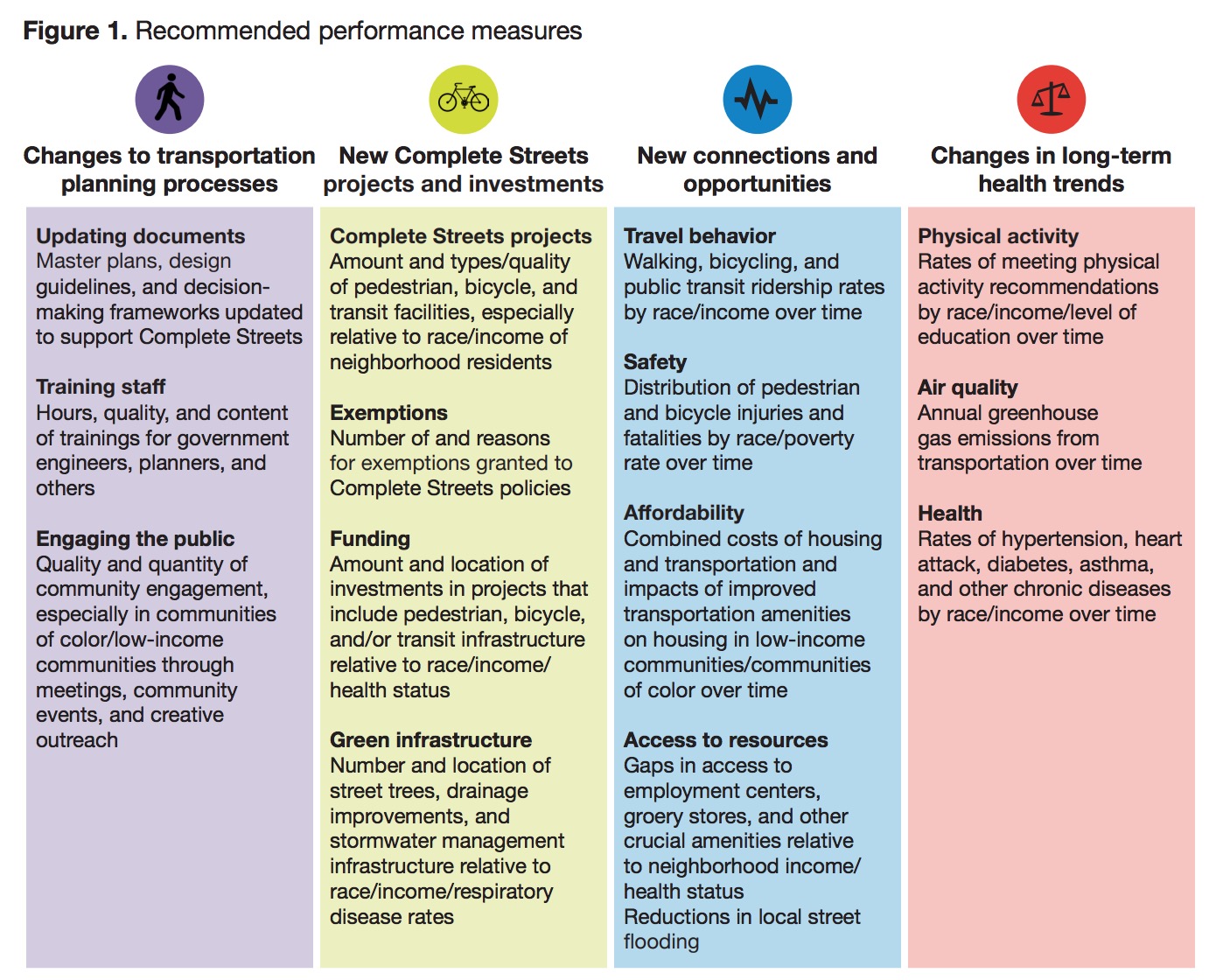BIKEASY
SMART GROWTH AMERICA
Introduction
Complete Streets is a fundamentally different approach to transportation planning, design, and engineering than the status quo of the last half century. It requires that all aspects of decision-making and implementation consider the needs of all people who use a road, regardless of age, ability, or mode of transportation. Streets are viewed as more than ways to move as many vehicles as possible. They are public spaces that connect and contribute to everything that surrounds them.
Complete Streets are built so people walking, biking, and driving can safely share the road. They expand access to opportunities by improving connections between where we live and where we work, learn, play, eat, worship, shop, and socialize.
New Orleans adopted a Complete Streets ordinance in 2011.2 Since then, the city more than doubled its bicycle network, and biking trips have increased. However, many of the ordinance’s promises, including annual reports measuring success of the Complete Street program, remain unfulfilled. Neighboring Jefferson Parish passed a Bicycle Master Plan in 2014 and is currently investing almost $56 million in projects that include walking and biking amenities, but there is currently no comprehensive Complete Streets program or evaluation. Major opportunities remain in both New Orleans and Jefferson Parish to create safer, healthier streets that provide more transportation choices and better connections to jobs and essential services, particularly in low-income areas.
This report demonstrates how jurisdictions, including the City of New Orleans and Jefferson Parish, can measure the performance of their Complete Streets and active transportation programs without conducting new or expensive large-scale data collection.
This report establishes an approach to evaluate Complete Streets programs with a focus on health equity for the City of New Orleans, Jefferson Parish, and other jurisdictions around the United States. The analysis identifies those populations facing the greatest health and safety risks and focuses on how Complete Streets can better serve these vulnerable communities.
This report pays particular attention to whether Complete Streets benefit people and places with high rates of poverty and chronic disease. Other communities across the country can replicate this approach, even if they have limited technical experience or strained staff capacity. We provide recommendations for how jurisdictions can scale up and improve these efforts moving forward.
Complete Streets can benefit low-income neighborhoods and communities of color that have historically not had much investment in biking and walking facilities. Members of these communities experience disproportionate rates of chronic diseases, are at higher risk of being struck and killed by cars while walking, and are less likely to own a car. If jurisdictions implement policies that prioritize those most vulnerable to unsafe traffic conditions and health risks, the opportunities for benefits are enormous.
Based on the National Complete Streets Coalition’s research and experience working with state and local departments of transportation, we have compiled the following list of recommended performance measures to evaluate Complete Streets through a health equity lens. In this report, we apply this evaluation approach to New Orleans and Jefferson Parish. By doing so, we identify ways for these two jurisdictions to increase the benefits from their Complete Streets investments. We hope this approach will serve as a guide for jurisdictions around the country to measure the success of their own Complete Streets programs with health equity in mind.
- In Louisiana, people earning under $15,000 annually are approximately three times more likely to have diabetes in their lifetimes than people earning over $50,000 annually.
- In New Orleans and Jefferson Parish, 36% of people live in high-poverty neighborhoods yet over 67% of crashes involving people biking or walking occur in these neighborhoods.
- In 2015, black people took about 25% of the bike rides counted in the City of New Orleans but accounted for almost half of bicycle injuries and fatalities
Download full version (PDF): An Evaluation of New Orleans and Jefferson Parish
About Bike Easy
bikeeasy.org
“Bike Easy makes bicycling easy, safe, and fun for everyone in Greater New Orleans. Bicycling has deep roots in Greater New Orleans’ history. We represent all people who ride or would like to ride bicycles in Greater New Orleans.”
About Smart Growth America
smartgrowthamerica.org
Smart Growth America advocates for people who want to live and work in great neighborhoods. We believe smart growth solutions support thriving businesses and jobs, provide more options for how people get around and make it more affordable to live near work and the grocery store. Our coalition works with communities to fight sprawl and save money. We are improving lives by improving communities.
Tags: Bicycling, Big Easy, Bike Easy, Bike Share, Cycling, Louisiana, National Complete Streets Coalition, New Orleans, Smart Growth America







 RSS Feed
RSS Feed